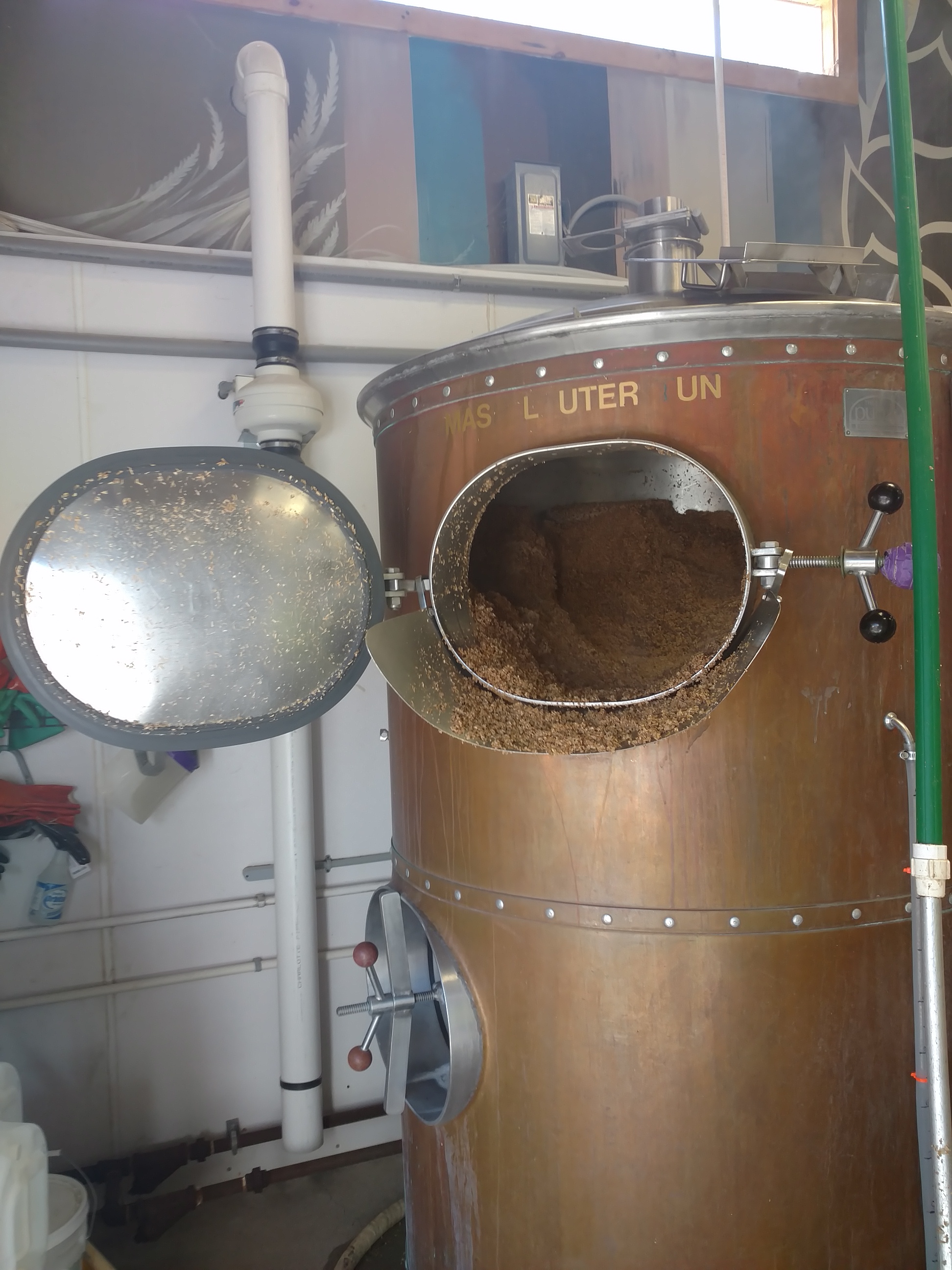I want to take a moment to introduce you to one of the bigger projects at Full Fork this year. Above is a photo of spent brewers' grains from Oxbow Brewery in Newcastle, ME. In the fall, I submitted a research grant proposal to SARE (Sustainable Agriculture Research & Education), which is part of the USDA that awards funds for farmers seeking to test an innovative idea in the field.
For me, that's using a particular composting method called bokashi with the spent brewers' grain [SBG], applying the composted material as a field amendment, and then monitoring its effect on plant growth and yield. Backing up a bit, though...
What are spent brewers' grain?
SBG is the major byproduct of beer production. It's what's leftover after what's called the masher steeps the grain and malt in hot water and converts the grains' starches into fermentable sugars. To breweries, SBGs are a waste product. To farmers, it's a potential source to significantly increase a field's organic matter.
The problem...
While SBGs have a long history as a feed supplement for pigs and cows, it isn't without its challenges, especially for vegetable farmers. It emerges from the masher essentially pasteurized - in other words, with very few living microorganisms - with both high nitrogen content (around a 9:1 to 12:1 C:N ratio) and high moisture content (depends on a brewery's equipment, but 70% isn't atypical). All in all, an excellent breeding ground for anaerobic bacteria, which, if you keep a compost pile at home you might be familiar with. They are the culprits producing the foul smell when your pile is too wet and needs adjustment. The finished product of typical anaerobic decomposition is of poor quality for farmers, can possibly be too acidic to apply directly to plants, and carries a health concern of harmful anaerobes such as E. coli.
The potential.
There's a burgeoning craft brewery market in U.S.. According to the Brewers' Association, the number of craft breweries has more than doubled nationally to 5,300 since 2012. Finding ways to use SBGs safely and effectively would present an excellent, free source of organic matter that farmers can use to improve their soils.
More broadly, building soil and working with spent brewers' grain is a way to mitigate climate change. When people think of climate change they often think of fossil fuels, energy production, and transportation. Conventional agriculture plays a part as well. It currently accounts for about 9% of CO2 emissions in the U.S.. Farming, though, also offers the very best storage space for carbon: the soil. This is the concept of carbon sequestration. With proper practices we can take atmospheric carbon, grow crops, and put that carbon back where it belongs.
So, burgeoning craft brew scene. Burgeoning local food production. Seems like a good match.
The SARE grant.
Now, there's already a working model for composting SBGs on a large-scale. Gowan Batist of Fortunate Farm in Caspar, CA, in partnership with North Coast Brewing Co., is doing it. Using a big windrow turner and a 45hp hydrostatic tractor, her farm is actively aerating the SBGs to prevent them from going anaerobic. It's an excellent setup if you have the tractor equipment and a are seeking to partner with a larger brewery.
The purpose of Full Fork's study is to trial a model better suited for a farm pairing with a modestly-sized brewery, and one that doesn't require specialized equipment to handle the SBGs, which could be a major deterrent for those seeking a relationship with their local brewery. The way I think this can be done is by working with the SBGs high moisture content rather than fighting against it.
Enter bokashi.
In simple terms, bokashi is a form of beneficial anaerobic decomposition that originates from Japan. The primary player is lactobacillus, the same bacteria used to make sauerkraut. By incoulating the SBGs in airtight 55-gallon drums, letting it ferment for two weeks, you can till it into the ground and it will fully integrate in another two weeks. The lactobacillus colonizes and predigests the biomass, and when exposed to aerobic conditions, dies, and is consumed by aerobic bacteria itself. It's a microbe eat microbe world out there.
So, that's the gist. And I have fair confidence that it will work. So far this spring, I've been stockpiling the bokashi'd-SBGs for the project. As you can see from the photos below, the winter's snow is nearly gone. It's about time to get out into the field.
I'll do a future post on the actual process of working inoculating the SBGs, as well as later posts about findings, results, etc.








